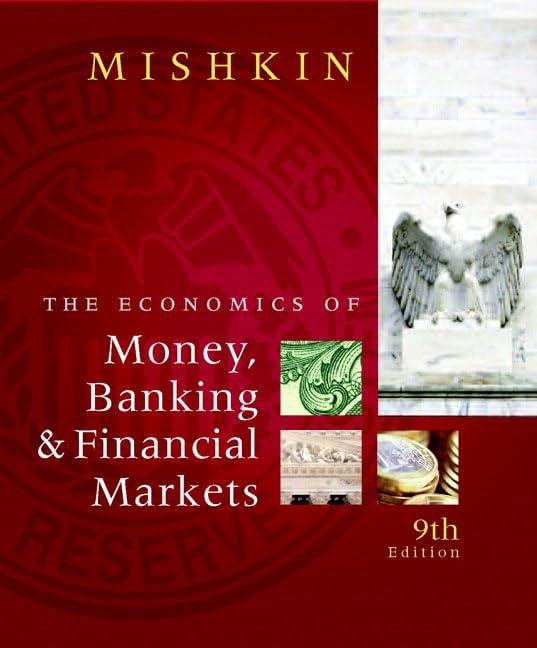Question
1. Your all-equity firm will dissolve in two years and will generate $100,000 in year 1 and $300,000 in year 2. Currently, there are 20,000
1. Your all-equity firm will dissolve in two years and will generate $100,000 in year 1 and $300,000 in year 2. Currently, there are 20,000 shares outstanding. Required return is 11%. You are considering among three dividend policy alternatives:
Policy I: You maintain a 100% dividend payout ratio in each year. Policy II: You payout your entire cash flow for the remaining two years, all in year 1.
Policy III: You pay nothing in year 1 and all of your cash flow in year 2.
a. In Policy I, calculate the dividend/share can you pay in year 1 and in year 2.
b. In Policy II, what is the maximum you can borrow from new shareholders in year 1?
c. In Policy II, what is the dividend/share you can pay the original shareholders in year 1?
d. In Policy III, what is the dividend/share you can pay the shareholders in year 2?
e. Calculate the stock price for your firm.
f. (Multiple choice): When taking into account flotation costs, you should recommend that your firm should not go which policy [I, II, or III]? (1)
Step by Step Solution
There are 3 Steps involved in it
Step: 1

Get Instant Access to Expert-Tailored Solutions
See step-by-step solutions with expert insights and AI powered tools for academic success
Step: 2

Step: 3

Ace Your Homework with AI
Get the answers you need in no time with our AI-driven, step-by-step assistance
Get Started


